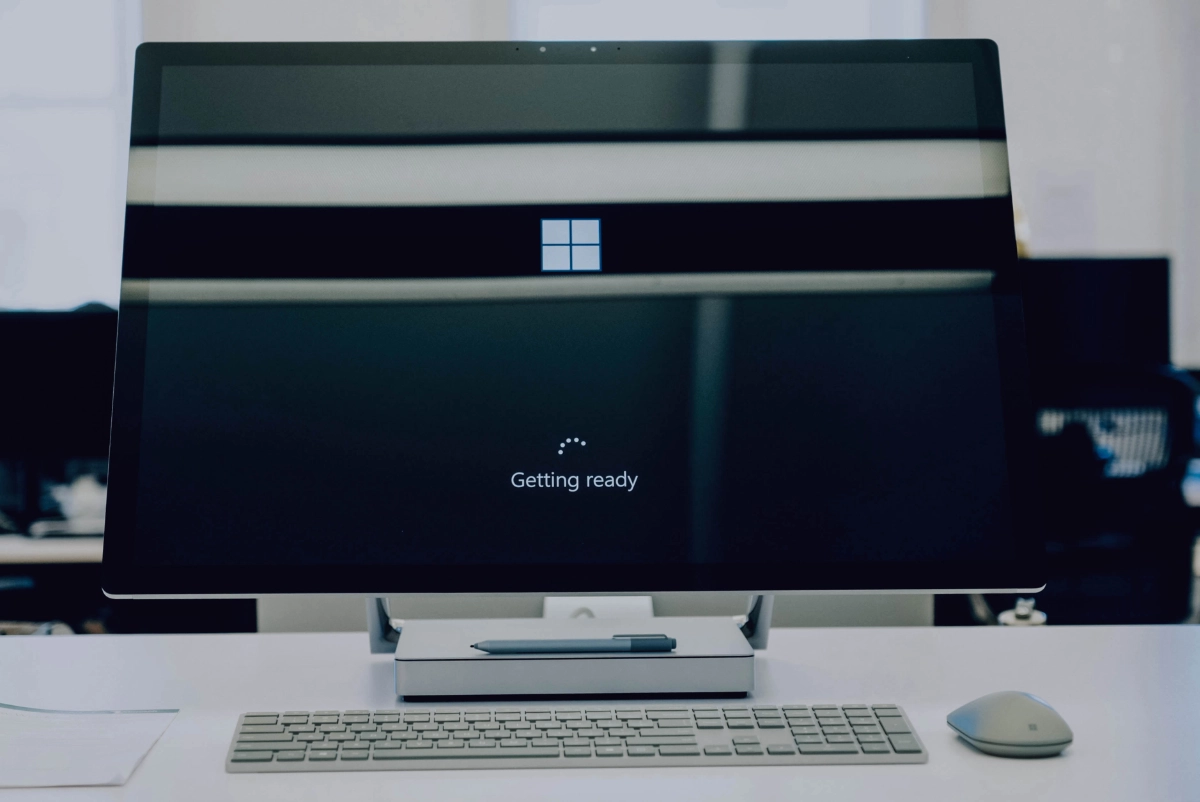Windows 10 End of Support - Getting ready for Windows 11.
Windows 10 End of Life
What You Need to Know About Moving to Windows 11
The end for windows 10 is coming, and it’s probably sooner than you think. On the 14th of October 2025, it will be the end of the support for windows 10.
Now, this doesn’t mean on that day your windows computer will shut down never to be able to be turned on again, but what it does mean is that it will lack critical support (provided by Microsoft updates and security) that is required for keeping the pc safe and secure online. No more updates or security patches from Microsoft immediately leaves your systems vulnerable to attacks, as the whole idea behind security updates and patches is that they are implemented to try and prevent new attacks and iron out any vulnerabilities that may arise in the operating system, without this support from Microsoft, running a windows 10 pc after this point – especially for your business, is a risky idea to say the least…
Getting Prepared
So, as we edge closer to October 14th 2025, it’s important that businesses start to prepare for the end of life and support for Windows 10.
The next step is to consider upgrading to Windows 11, but unfortunately, it’s not as straightforward as past upgrades. With new hardware requirements in place that may mean you aren’t able to get the windows 11 operating system onto your current computer.
Windows 11 also wasn’t initially received well by the public and this was shown clearly by the low uptake. When it first came out it was highly criticized for the changes to the start menu and the taskbar – placing the taskbar in the middle by default (don’t tell apple…) and for the removal of multiple features and capabilities that people knew and loved in windows 10.
Upgrading all company and personal computers to be suitable for windows 11 is a huge task that will have a great impact on businesses, both financially and logistically. According to Stat Counter 66% of people who use windows as their operating system are still using windows 10 as opposed to only 30% using windows 11. This is despite windows 11 being out since 2021!! which clearly shows the preference of businesses to retain their existing windows 10 operating systems.
Windows 11 Requirements
Requirements have changed a fair bit in comparison to windows 10 requirements. Windows 11 is designed with modern hardware and security in mind, this means that it needs to have certain features that keep your pc and files safe. To see if your current PCs can handle the upgrade, Microsoft offers the PC Health Check app. This tool scans your computer and is able to let you know if your hardware meets the necessary criteria, which includes compatible processors, sufficient RAM and storage, and crucially, the presence of a Trusted Platform Module (TPM) version 2.0.
I know you’re probably thinking it…
What the hell is TPM 2.0 and why is it required?
Well, essentially, TPM 2.0 is a physical chip on the motherboard which allows the computer to create and store security keys, which proves that your device is actually your device and hasn’t been cloned or tampered with in any way.
TPM 2.0 is particularly important because it provides enhanced security features that weren’t as essential in earlier versions of Windows. This grants your pc with better protection for encryption keys, user credentials, and other sensitive data. The emphasis on TPM in Windows 11 clearly shows Microsoft’s focus on ramping up security to counteract the constant cyber threats that seem to be occurring more and more frequently nowadays.

Can I stick with Windows 10? What are the risks?
Yes, technically you can stick with windows 10 and it will still work for the most part… but running Windows 10 after its support phase ends REALLY isn’t advisable. Without security updates, your system becomes a prime target for malware and other cyber threats. Upgrading to Windows 11 not only secures you the latest protections but also brings performance improvements which could potentially boost staff productivity.
Planning Your Upgrade
Switching to a new operating system comes with some risks and considerations, so here’s how to approach it:
Firstly, check your Compatibility: As previously mentioned, Microsoft have released a method by which you can check if your pc is even capable of upgrading before you go ahead and try to do it. Start by using the PC Health Check app to see which machines in your business are ready for Windows 11.
Financial Planning: If some devices aren’t compatible, you might need to budget for hardware upgrades or replacements, which gives just over a year to figure out what hardware may be required and then start to plan to fund it.
Prepare Your Team: Changing to a new operating system may affect some systems, so ensure your team is ready by providing training on how to use the new systems effectively.
MAKE A BACKUP/RESTORE POINT: Before actually going ahead and upgrading, please ensure you make a backup of your old computer on windows 10, this can be done in many ways, but a good way would be to make a restore point, this ensure that you have something that you can fall back on, should the upgrade not go to plan.
Protect important files: I would recommend manually moving off any files that you deem important to a removeable USB drive this way you can be certain you won’t lose them as part of the upgrade process, you could also take advantage of a cloud file storage backup system, like OneDrive or dropbox, to be extra cautious, I would highly recommend doing at least one of the above!
This isn’t the first time windows have made one of their operating systems obsolete, and it certainly won’t be the last! Windows 7 is the most recent example and was a favourite operating system to many, it officially reached its end of life on January 14, 2020. In 2024 the Windows 7 operating system is very vulnerable to attacks, especially ransomware, which serves as a reminder of the importance of using an operating system that Is backed by consistent security updates.
What are the alternatives?
Unfortunately, there aren’t many alternatives to windows Operating Systems, atleast ones that are business focused and compatible with commonly used business softwares, as almost all of the software that is created for businesses is designed for windows. However there is usually some crossover in the most commonly used softwares to Apple operating systems and in some cases to Linux also.
Apple OS
Apple OS is fairly well known and you could certainly run most modern businesses using apple OS as the primary operating system, however it’s pretty pricey for what you get and some users find it complex to navigate and use, especially if they are used to the windows OS it can be quite an adjustment!

Linux
Linux (and the many variants of it) are known for their reliability, and they have a ‘light’ os with limited bloatware, however their compatibility is generally low so it’s hard to assess whether this would be suitable for your business, and running a linux os is fairly involved and could cause problems down the line if you are looking to integrate new software or new IT hardware into your business.
To ensure your business remains secure and efficient it is vital that your business keeps up with modern operating system changes and updates, without these updates you leave the business pretty exposed to cyber-attacks and malicious threats.
If you have any questions or need help ensuring your business goes through a smooth transition over to windows 11, we can help by assessing your current setup and putting in place a plan before fully rolling out the windows 11 environment to your office network, just get in touch with us and let us know the situation and we’d be happy to assist and see what is best for you.
Don’t forget to follow us on LinkedIn, and YouTube, for updates! Or click here to return to the Blog Page.

